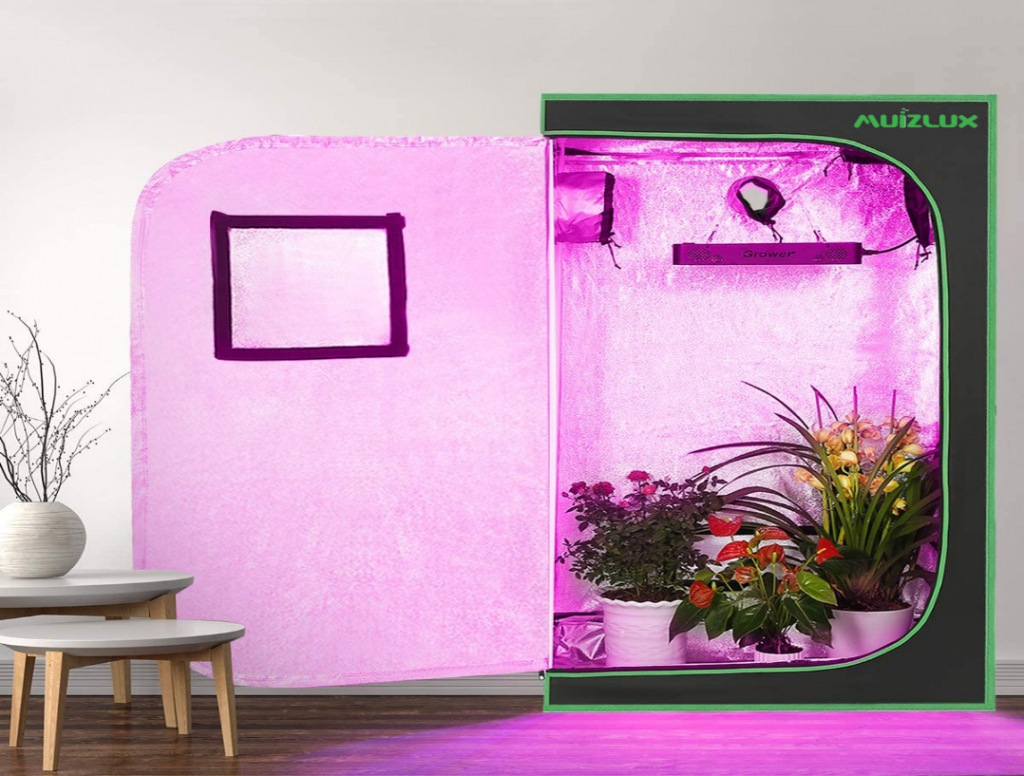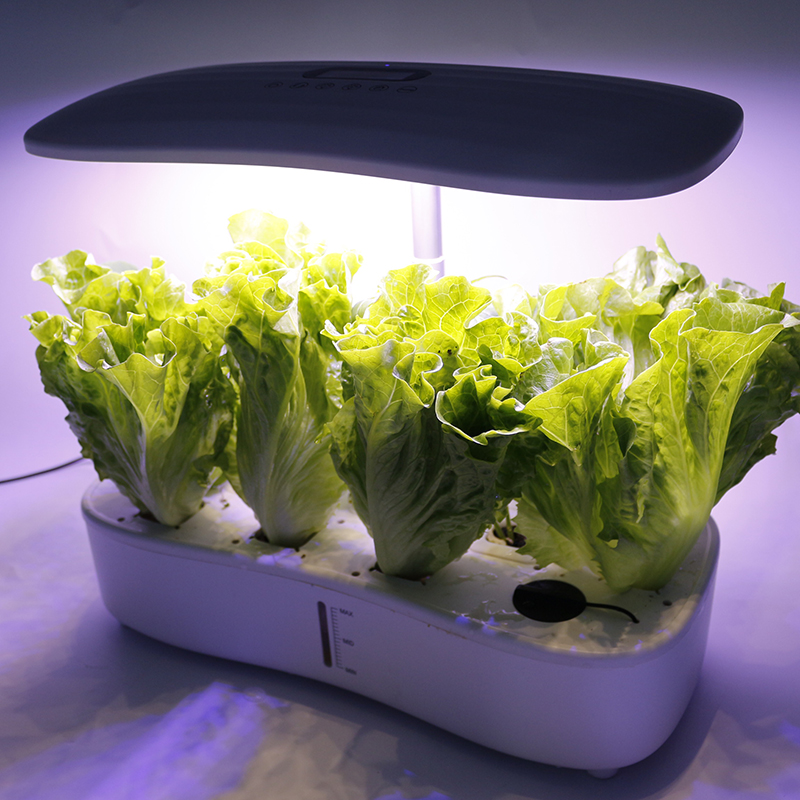What is the efficiency of light in the grow room?
In humans and animals, the perception of colors and light happens through photopic vision. From this, plant lighting hydroponics created, which measure the luminous flux of a light bulb.
However, when it comes to horticultural lighting, Lumens is not talked about. This is because this system based on human perception of light, not plants. It was with this in mind that the term PAR created. Which is the key to measuring the efficiency of light in the grow room.

PAR Light Bands: a very important measurement for plant lighting
PAR (Photosynthetic Active Radiation) is a very important measurement when it comes to plant lighting hydroponics. This term means the length of light, within the visible range, that drive photosynthesis
However, in terms of horticultural lighting equipment. It is important to know not only how much PAR the fixture produces. But also, how much of this PAR delivered to the plants. That’s because much of the light can get lost on the way to the grow room. In addition, it is also interesting how much energy spend to deliver this amount of PAR.
Plant lighting hydroponics: the flow of photosynthetic photons
To measure the amount of PAR produced by an equipment, the term PPF is common. It means the flow of photosynthetic photons. That is, it is the total amount of PAR produced by a lighting system every second. This term measured
s in micromoles per second and does not measure how much light actually reaches the plants. For this, let’s get to know a third term: PPFD.
PPFD – Quantum Board 480w
The PPFD represents the photosynthetic photon flux density. That is, the amount of plant lighting hydroponics that actually reaches the plants of your cultivation. In scientific terms, it is the number of photosynthetically active photons that fall on a given surface every second, so it measures in micromoles per square meter per second.
To correctly measure the PPFD, it is necessary to perform several measurements, at a certain distance, and then calculate the average of all of them. Despite this, some companies only report the PPFD at the central point of an area.
Horticulture lights are naturally brightest in the center
This value can confuse the consumer, as horticulture lights are naturally brightest in the center and lose strength near the edges. So, you can buy a plant lighting hydroponics thinking it’s very potent, when in fact, it’s only potent in the center of the area it hits.
In conclusion, to be sure of the value indicated by the manufacturer, he must inform the number of measurements common to calculate the average, the distance of the measurement from the light source (vertical and horizontal) and the minimum/maximum value ratio.
Consider photon efficiency before purchasing a lighting system
Another important term to consider before purchasing a new lighting system is photon efficiency. This means the efficiency that a lighting system has in converting electrical energy into PAR.
Plant lighting hydroponics is common for manufacturers to report total electrical watts (w/m²), but that doesn’t say much, as watt is a measure of electrical input, not light output. However, if the input power supply, along with the PPF, the photon efficiency can calculate.
Photon effectiveness is micromoles per Joule
The unit of measurement of photon effectiveness is micromoles per Joule, and the higher this number is, the greater the efficiency of the system (less energy expended to produce PAR light). When a company does not supply the correct units discussed above.
It is usually because they do not produce specific horticultural equipment. This is not a problem, as long as it is possible to certify the efficiency of the plant lighting hydroponics in the parameters required otherwise.
We know that there are many new terms that can cause confusion, but necessary to understand the efficiency of light in the grow room. To facilitate, we provide the table below with a summary of each term and its definition.
How to choose grow climate control for plant lighting hydroponics?
Throughout the year, the length of days changes according to the seasons. And it’s the length of days that plants rely on to know when it’s time to grow or bloom. As the purpose of indoor cultivation is to mimic what happens in nature, the plant lighting hydroponics is extremely important for growers.
Along with it, it is also important to know how to choose the climate control of the grow room, which controls lighting, humidity and temperature.
To choose the ideal type of lighting, you can check the post How to choose grow lighting. After this choice, let’s choose the light control and program it correctly.

All you need is a timer for on and off
Although there are more sophisticated equipment’s that controls the light, temperature, humidity and CO2 level of the grow room. it is not essential that you use all of this. To start, all you need is a timer, which turns the lights on and off at the programmed time, and a thermo hygrometer, which measures the temperature and humidity of the environment.
Plant lighting hydroponics: controlling the light cycle
In nature, germination usually occurs in early spring and develops during summer, when the days are longer. With the arrival of autumn, where the days start to get shorter, the plant understands that it’s time to bloom. A plant that is already ready to flower, but still has access to more light than dark, will not develop flowers.
This is because she understands that summer has not yet arrived, and therefore remains in a vegetative state. It is as if the plant lighting hydroponics communicates to the grow which phase it is in. The ideal is to provide between 16h and 24h of light a day during the vegetative period (imitating summer), and 12h of light during the flowering period (imitating autumn).
You can stress your plants.
To ensure the accuracy of the process, timer, or timer, which is the device responsible for controlling the lamps. If you live in a very hot region, choose to turn on the lamps at night, so as not to raise the temperature of your grow room too much.
Plant lighting hydroponics: controlling humidity
In addition to the light cycle, it is important to control the humidity and temperature of the room, using a thermo hygrometer. Check the ideal humidity for each stage of the plant in the table below. If the humidity is higher than desired, you can use a dehumidifier, which removes moisture from the place.
It is also possible to correct this problem by increasing the power of your hood. However, this will only work if the humidity outside is lower than the humidity inside the greenhouse. In this way, dry air from outside enters while moist air from inside remove.
Conclusion
Similarly, if the humidity is lower than desired, a plant lighting hydroponics can be common. It introduces moisture into the air. It is also possible to make the correction with ventilation, however, in this case the humidity of the outside air must be higher than the air inside. Thus, humid air introduces into the greenhouse and dry air remove, increasing the humidity of the grow room.



